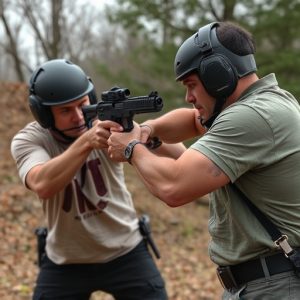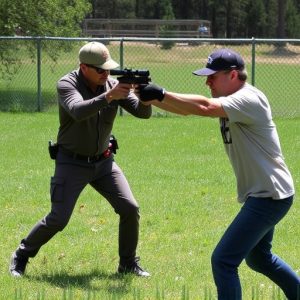Taser Paralysis Duration: Impact of Compact Stun Guns with Built-in Chargers
Taser deployment utilizes a compact stun gun with integrated charger to temporarily paralyze targets…….
Taser deployment utilizes a compact stun gun with integrated charger to temporarily paralyze targets, aiding in security and law enforcement. Paralysis duration varies based on Taser model, target area, and physical condition, ranging from 15 to 60 seconds. Advanced compact stun guns offer shorter immobilization times due to higher voltage pulses. Proper training is crucial for safe deployment, balancing public safety and well-being. The legal landscape surrounding these devices is complex, with varied regulations across jurisdictions.
“Exploring the duration of paralysis post Taser deployment is a critical aspect of understanding these devices’ impact. This article delves into the factors influencing the time individuals remain paralyzed after exposure, focusing on the potential advantages of compact stun guns equipped with built-in chargers. We examine real-world case studies to analyze varying outcomes and discuss legal implications, emphasizing safety measures for responsible use. By examining these elements, we aim to provide a comprehensive overview of paralysis duration, shedding light on an important yet often overlooked aspect of Taser deployment.”
- Understanding Taser Deployment and Its Immediate Effects
- Factors Influencing Paralysis Duration
- The Role of Compact Stun Guns with Built-in Chargers
- Case Studies: Analyzing Real-World Scenarios
- Legal Implications and Safety Measures
Understanding Taser Deployment and Its Immediate Effects
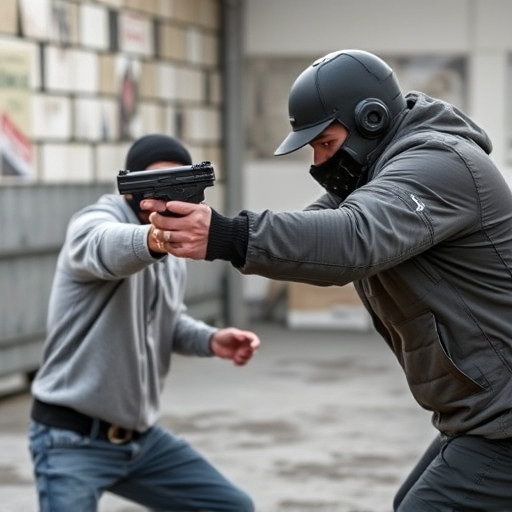
Taser deployment involves the use of a compact stun gun with built-in charger to deliver an electric shock, incapacitating the target for several seconds. The immediate effects are designed to disrupt muscle control and cause temporary paralysis, allowing law enforcement or security personnel time to secure or subdue an individual. The duration of this paralysis can vary based on factors like the model of Taser used, the body parts targeted, and the individual’s physical condition.
Understanding these variables is crucial for both safety and effectiveness. Proper training ensures that officers know how to navigate the sometimes labyrinthine process of Taser deployment, maximizing its impact while minimizing risks associated with prolonged paralysis. This involves considering not just the hardware—the compact stun gun with its built-in charger—but also the strategic application in various scenarios, ensuring a balanced approach to public safety and individual well-being.
Factors Influencing Paralysis Duration
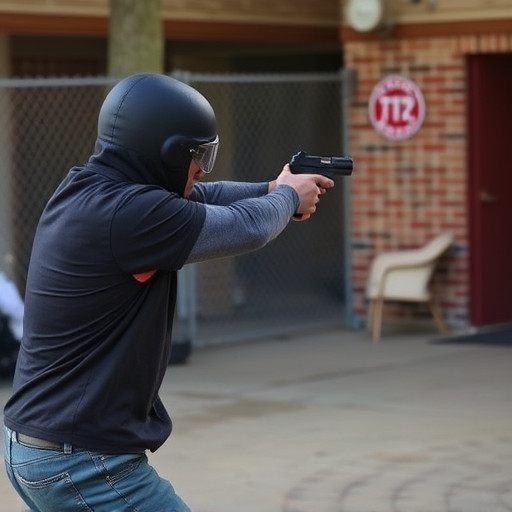
The duration of paralysis induced by a taser can vary greatly, influenced by several factors. One key consideration is the model and power output of the stun device. More advanced compact stun guns with built-in chargers often deliver higher voltage pulses, potentially leading to shorter durations of immobilization. The size and weight of the weapon also play a role; smaller, lighter devices may cause less muscle contraction and subsequent recovery time for the subject.
Another significant factor is the target area of contact. The electrical current from a taser affects nerve signals, so targeting larger muscles or areas with higher nerve density can prolong paralysis. Environmental conditions like temperature and humidity can also impact the body’s response to the shock, potentially affecting the duration of muscle incapacitation.
The Role of Compact Stun Guns with Built-in Chargers
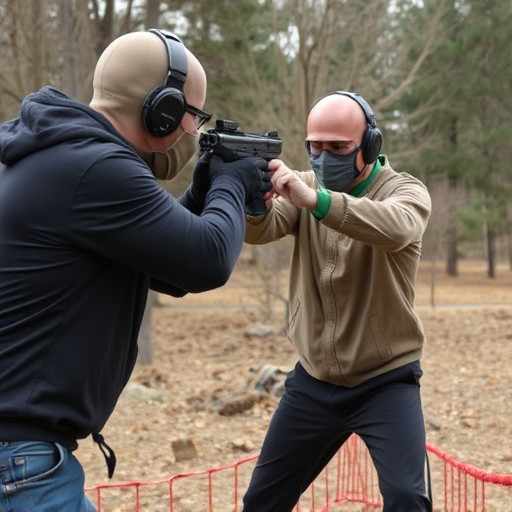
The development of compact stun guns with integrated chargers has significantly influenced the duration and impact of paralysis resulting from taser deployment. These innovative devices offer a more portable and convenient option for law enforcement and personal defense, ensuring quick access to a powerful stun device. The built-in charger eliminates the need for separate charging equipment, allowing users to be fully prepared without additional bulk or downtime. This feature is particularly advantageous in dynamic scenarios where every second counts, such as high-speed pursuits or self-defense situations.
Moreover, compact stun guns with integrated chargers often boast enhanced safety features and user-friendly designs. Their small size enables ease of concealment, providing individuals with an added sense of security. These devices are designed to deliver a strong electric shock, temporarily paralyzing the target, giving users valuable time to escape or summon assistance. The combination of portability, convenience, and powerful performance makes these compact stun guns attractive choices for those seeking effective personal protection without sacrificing mobility.
Case Studies: Analyzing Real-World Scenarios
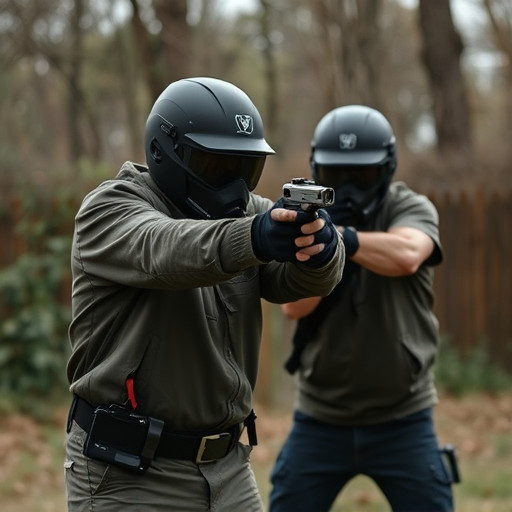
In real-world scenarios, understanding the paralysis duration after a Taser deployment is crucial. Case studies offer a compelling lens to analyze these events. Research has shown that the time a person remains paralyzed can vary significantly based on factors like the model of the stun device used, the body parts targeted, and the individual’s physical condition. For instance, a compact stun gun with built-in charger, when deployed correctly, can induce muscle paralysis for periods ranging from 15 to 60 seconds. However, in some cases, prolonged paralysis lasting up to several minutes has been documented, particularly when higher voltage settings are employed or if the device is misaligned during use.
These real-world scenarios underscore the importance of proper training and awareness surrounding Taser deployment. Officers and individuals equipped with compact stun guns need to be educated on the device’s capabilities and limitations, as well as the potential for varying paralysis durations. Understanding these dynamics can help ensure safety for both the user and the targeted individual, while also promoting responsible use in law enforcement and self-defense applications featuring this technology.
Legal Implications and Safety Measures
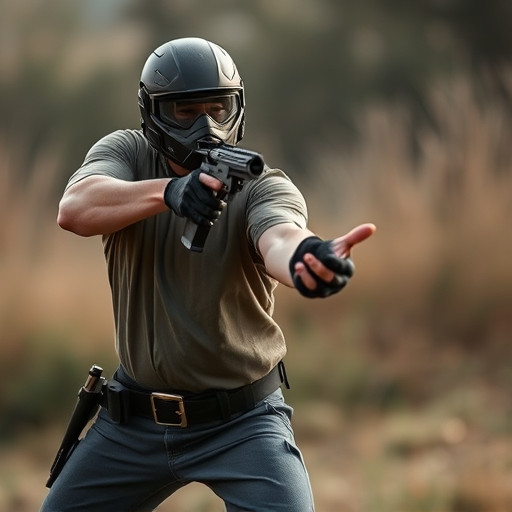
The legal implications surrounding the use of stun guns, including compact models with integrated chargers, are complex and vary across jurisdictions. In many regions, law enforcement agencies and private citizens can legally carry stun devices for self-defense purposes, provided they comply with specific regulations. However, the duration of paralysis induced by a stun gun is a critical factor in these laws. If the paralysis extends beyond the recommended safe period, it could lead to severe legal consequences for the user or law enforcement officers.
Safety measures are paramount when considering the deployment of any stun device, especially compact stun guns with built-in chargers. Users must be trained and aware of the potential risks and proper usage techniques. Ensuring that individuals receive adequate instruction on de-escalation tactics and the correct application of a stun gun can help minimize the risk of prolonged paralysis, which could result in accidental injuries or even death. Regular maintenance and charging routines are also essential to guarantee optimal device performance during critical situations.
In conclusion, understanding the duration of paralysis resulting from taser deployment is essential for both law enforcement agencies and individuals considering compact stun guns with built-in chargers. Factors like subject physiology, environmental conditions, and application technique significantly influence paralysis length. While these devices offer a crucial tool for self-defense, it’s vital to stay informed about their limitations and potential risks. Legal implications and safety measures must be prioritized to ensure responsible use, fostering a balance between public safety and individual rights in the modern world.
